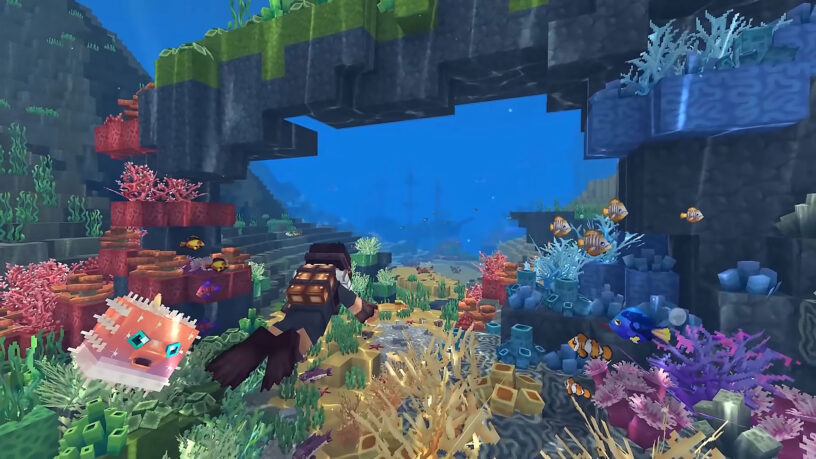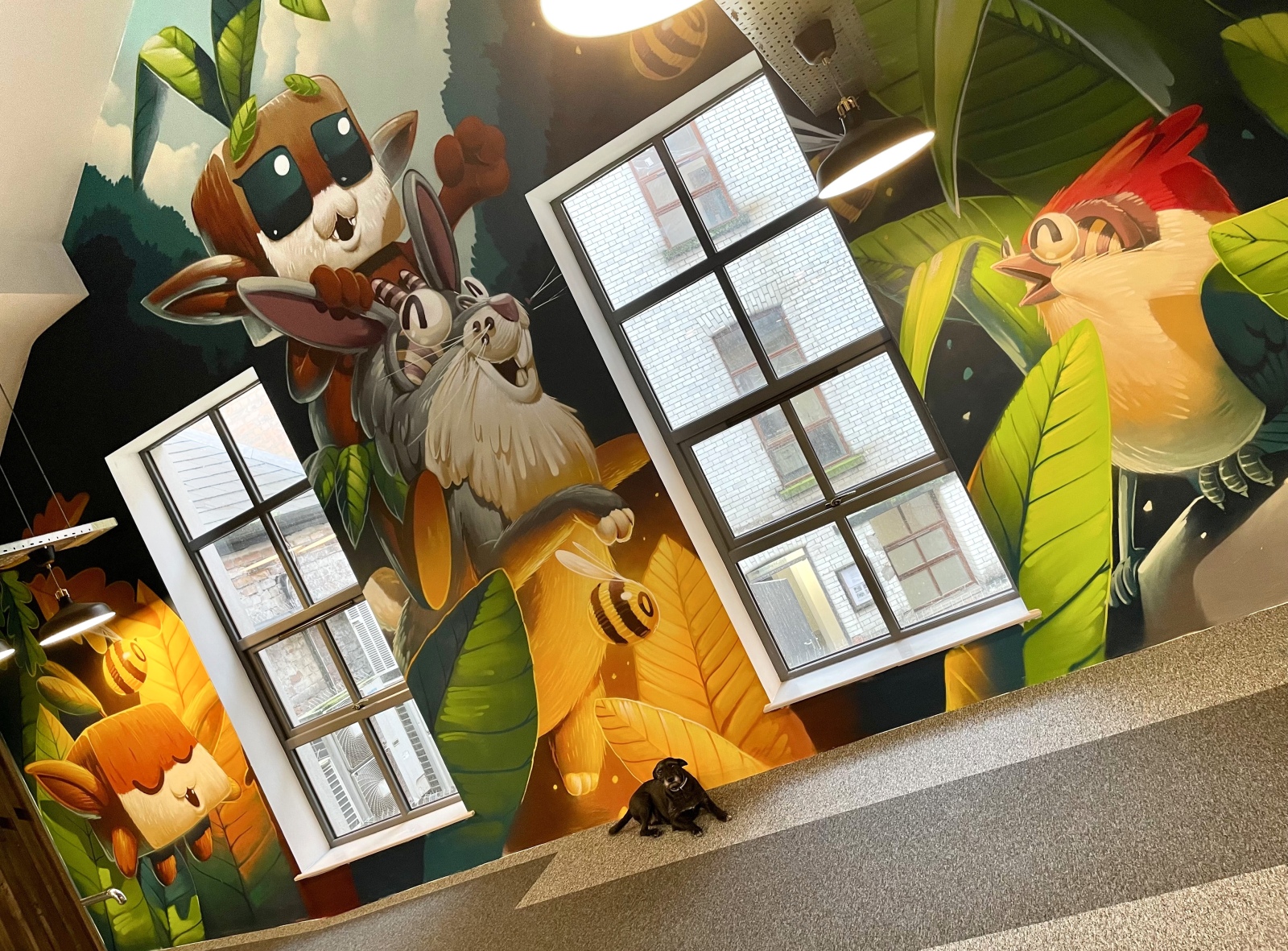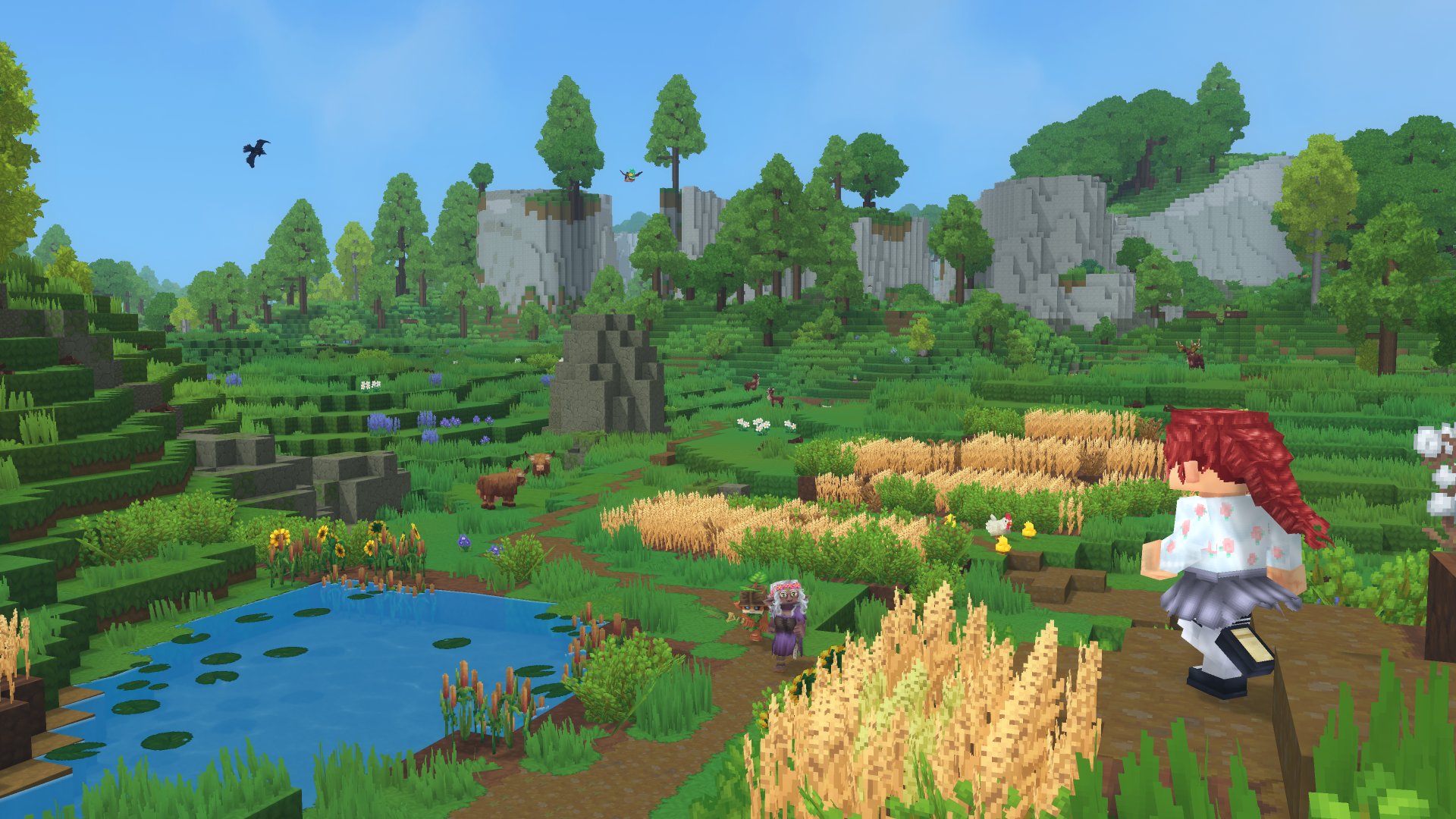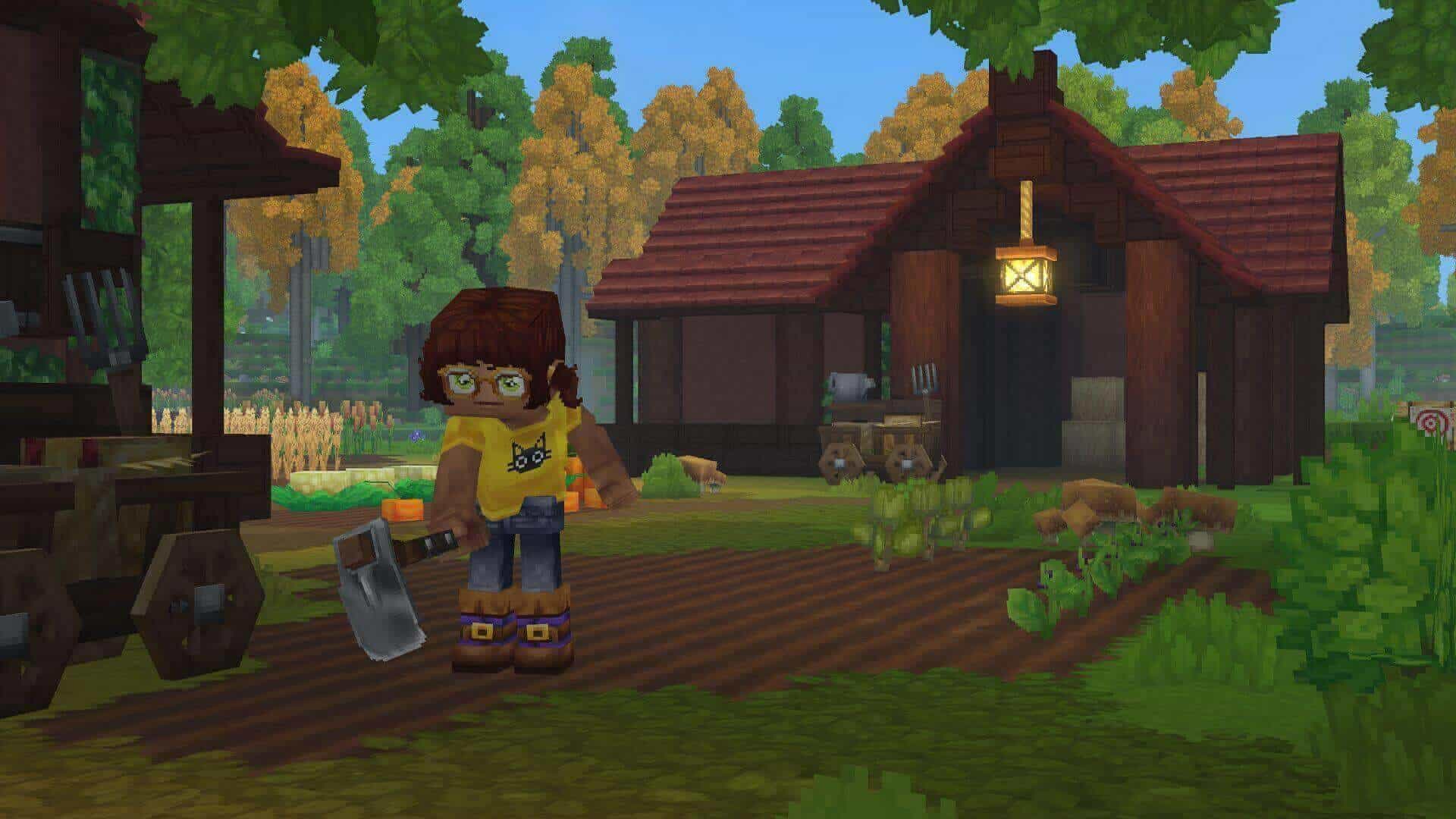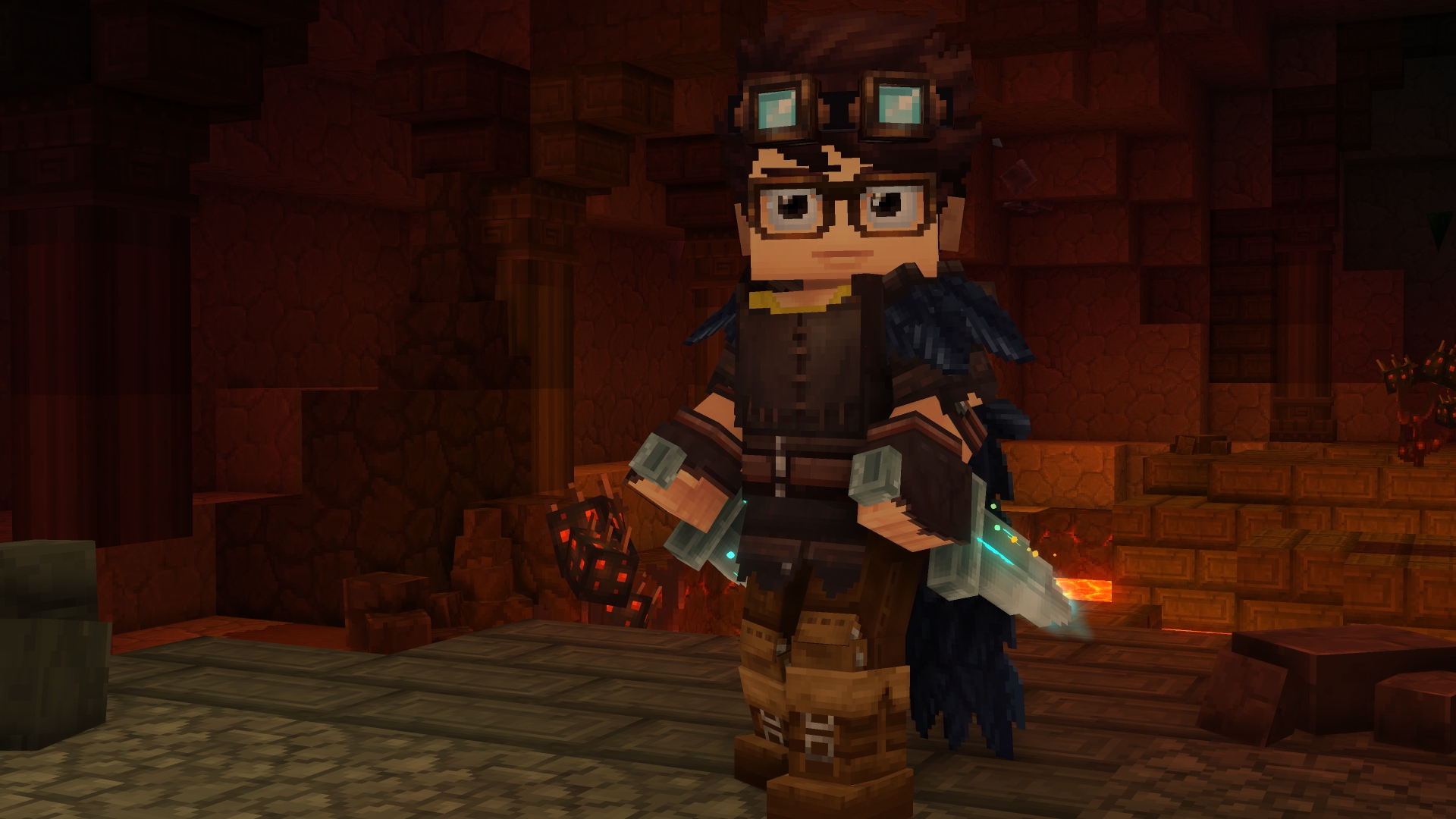In this blog post, we’re going to show you how Hytale sfx designer Kieran Fitzpatrick goes about creating sound effects for the game. In order to demonstrate this process, we’re going to take a closer look at one of the denizens of zone 1: the swamp-dwelling Fen Stalker.
You may have spied a Fen Stalker or two in a few of the screenshots in the Media section, and it also features in this piece of key art by Thomas ‘Xael’ Frick:
Art like this helps inform a creature’s look, movement style, and role in the game – and each of these factors, in turn, help to establish how it might sound.
“The job of sound effect design is to take concept art, or an in-game model, and bring to life” Kieran says. “To take the work of the rest of the team, and give it a voice.”
“Looking at concept art is the quickest way for me to find out the character’s size, what they’re made of, and if they’re going to be a strong character or a weak character” Kieran says. “That lets me pick out what their sonic signature is.”
“I wanted the Fen Stalker to feel bubbly” Kieran says. “Like he’s underwater or full of fluid.”
Achieving this effect means drawing from some surprising audio sources. In addition to Kieran’s own voice, the Fen Stalker sound is created by combining parrot squawks with the braying sound of a zebra.
“I have a huge library of animal recordings that I’ll sift through to try to find the sonic element that we’re trying to capture” Kieran says. “It just happened to be that the zebra had an otherworldly sound that you don’t hear very often.”
All of this source material is then processed in an audio workstation – the Fen Stalker’s alert sound, for example, is comprised of eight different clips.
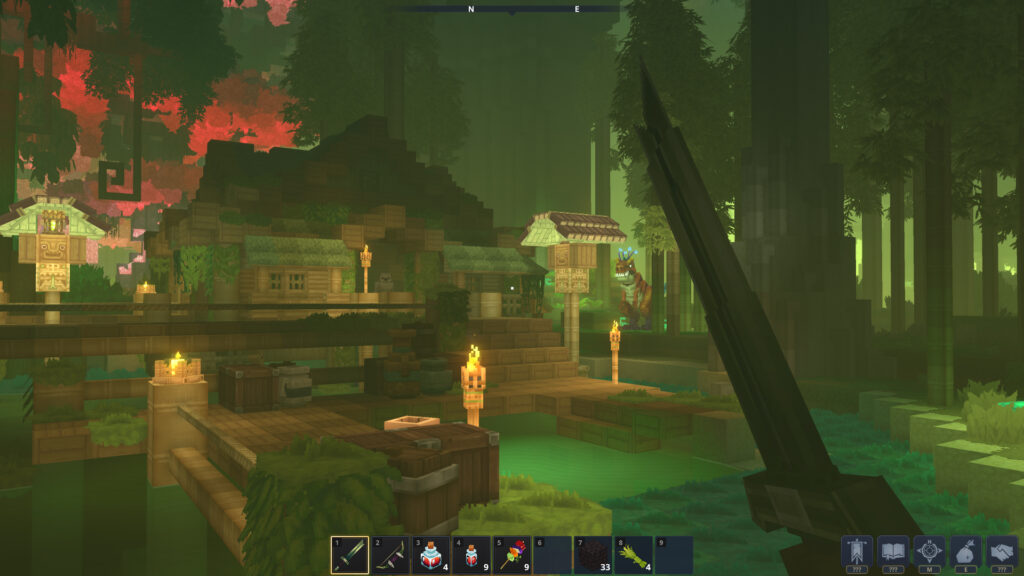
“When it comes to my own voice, I want to get as many layers as I can and cut them into shorter clips that I can stack together” Kieran explains. “Taking a throat gargling sound, and having it mix into popping and clicking sounds. Another trick I use is morphing, where I’ll take the waveform of one audio track – popping or clicking, for example – and use that waveform to shape another one, such as the parrot squawk.”
Bird calls in particular take well to this morphing technique, and surprising results can be achieved when they’re combined with a human voice. “Another effect I use a lot is pitch shifting” Kieran adds. “I’ll speed things up and slow them down, or reverse them – I do that a lot with my own voice. I’ll also use effects like phasing to help bring out a lot of warbly, bubbly sounds.”
Here’s the end result – a Fen Stalker reacting to the player’s presence. Grab your headphones or turn the volume up!

